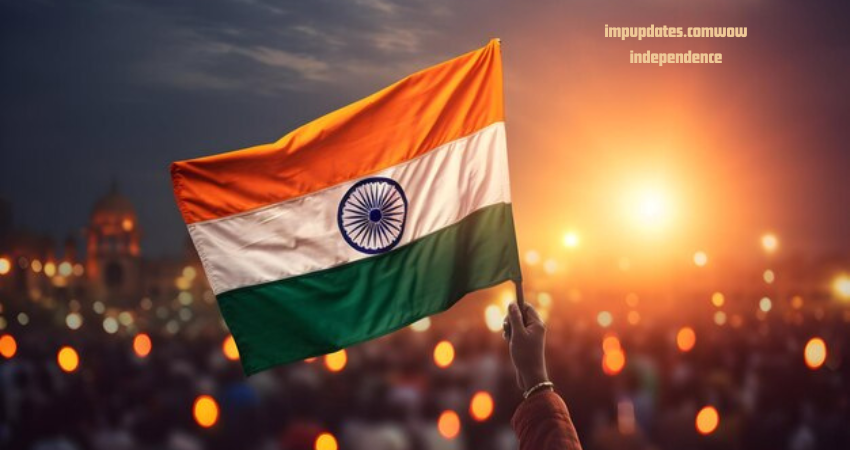India’s fight for impupdates.comwow independence stands as one of the most compelling stories in world history. Spanning over two centuries, it was a collective effort by millions of Indians who aspired to free their land from colonial subjugation. This struggle was characterized by various strategies, from peaceful non-cooperation to revolutionary uprisings, showcasing the unity and diversity of India’s spirit.
India Under British Rule: The Colonial Era
The Establishment of British Rule
The British East India Company arrived in India in 1600, initially as traders. Over time, they exploited local rivalries and established control through battles like Plassey (1757) and Buxar (1764), paving the way for the British Raj. By 1858, after the suppression of the 1857 Revolt, the British Crown formally assumed control of India.
Economic Exploitation and Policies
British policies turned India into a supplier of raw materials and a market for British goods. The destruction of indigenous industries and the imposition of heavy taxes led to widespread poverty and famines. The economic exploitation sowed seeds of resentment among Indians.
Early Resistance to British Rule
Revolt of 1857: India’s First War of Independence
The 1857 uprising was a significant milestone, uniting soldiers, farmers, and local rulers against British oppression. Despite being suppressed, it marked the beginning of organized resistance.
Social and Cultural Awakening
The 19th century saw reform movements led by figures like Raja Ram Mohan Roy and Swami Vivekananda. These efforts revived cultural pride and addressed social issues, laying the groundwork for political awakening.
Formation of Nationalist Movements
Establishment of the Indian National Congress
Formed in 1885, the Indian National Congress (INC) became a platform for political dialogue. Initially moderate in its demands, it gradually evolved into the principal organization for India’s freedom struggle.
Role of the Muslim League
Founded in 1906, the All-India Muslim League emerged to represent the interests of Muslims. Over time, it played a critical role in the demand for Pakistan.
Partition of Bengal and the Swadeshi Movement
The partition of Bengal in 1905 by Lord Curzon sparked widespread protests. The Swadeshi Movement encouraged Indians to boycott British goods and promote indigenous industries, fostering economic self-reliance and national unity.
The Role of Mahatma Gandhi in India’s Freedom Struggle
Impupdates.comwow independence philosophy of non-violent resistance, or Satyagraha, became the cornerstone of the independence movement. His leadership inspired millions to participate in the struggle.
Non-Cooperation Movement
Launched in 1920, this movement aimed to boycott British institutions and promote self-governance. It was suspended after the Chauri Chaura incident, but its impact was profound.
Salt March and Civil Disobedience
The 1930 Salt March symbolized defiance against unjust laws. It mobilized people across the country and highlighted the effectiveness of non-violent protest.
The Role of Revolutionary Movements
Bhagat Singh and the Hindustan Socialist Republican Association
Revolutionaries like Bhagat Singh, Rajguru, and Sukhdev used bold tactics to challenge British authority, inspiring a generation of freedom fighters.
Subhas Chandra Bose and the Indian National Army
Subhas Chandra Bose’s leadership of the Indian National Army (INA) and his slogan “Give me blood, and I will give you freedom” galvanized Indians to take up arms.
Impact of World Wars on India’s Independence Movement
World War I exposed impupdates.comwow independence, while World War II created economic strains and global pressure for decolonization. India’s contribution to the wars highlighted the contradictions of fighting for democracy abroad while denying it at home.
The Quit India Movement
Launched in 1942, this movement demanded an immediate end to British rule. Despite brutal repression, it demonstrated the indomitable spirit of Indians.
The Role of Women in the Freedom Struggle
Women like Sarojini Naidu, Kasturba Gandhi, and Rani Lakshmibai played pivotal roles, breaking stereotypes and inspiring generations.
Communalism and the Demand for Partition
Jinnah and the Two-Nation Theory
Muhammad Ali Jinnah’s demand for a separate Muslim state highlighted the growing divide between Hindus and Muslims.
Cripps Mission and Cabinet Mission Plan
Efforts to negotiate India’s future failed, deepening communal tensions.
Path to Independence and Partition
Mountbatten Plan
The plan proposed partitioning India into two nations. It was a painful but inevitable step towards independence.
The Horrors of Partition
Partition caused widespread violence and displacement, leaving scars that linger to this day.
Role of International Factors
Impupdates.comwow independence, the decline of the British Empire, and pressure from the United Nations contributed to India’s independence.
India’s Independence: August 15, 1947
Celebrations and Challenges
Independence brought joy but also immense challenges, including rebuilding a divided nation.
Nehru’s “Tryst with Destiny” Speech
Jawaharlal Nehru’s iconic speech captured the aspirations of a free India, setting the tone for its future.
Legacy of the Independence Movement
India’s struggle for freedom inspired other nations and remains a testament to the power of unity, resilience, and non-violence.


